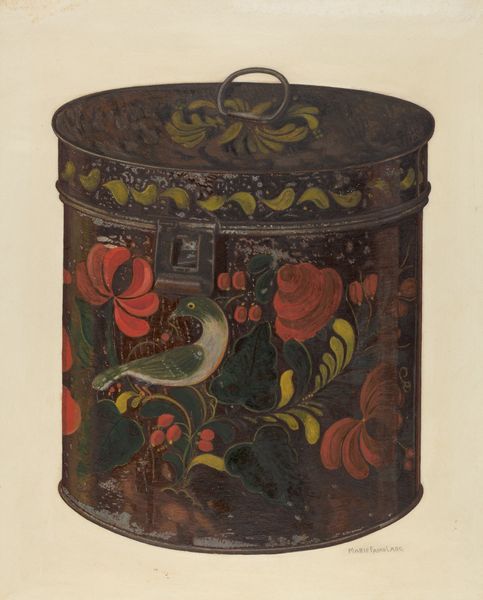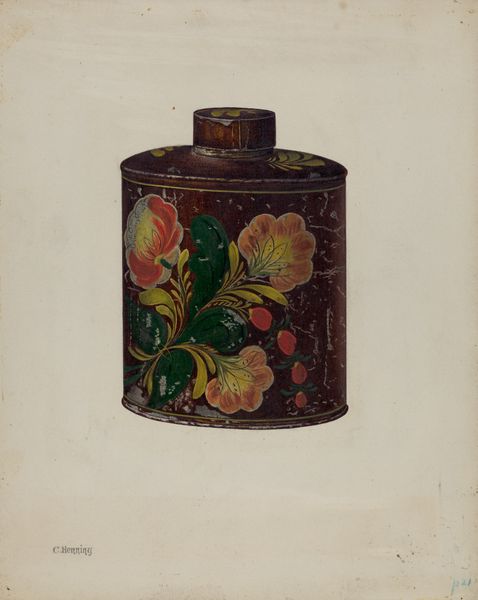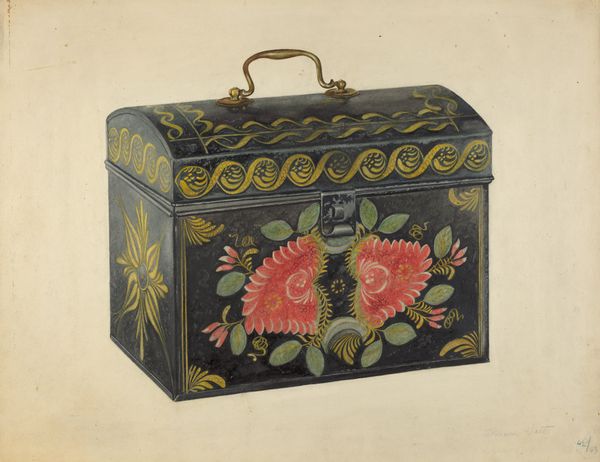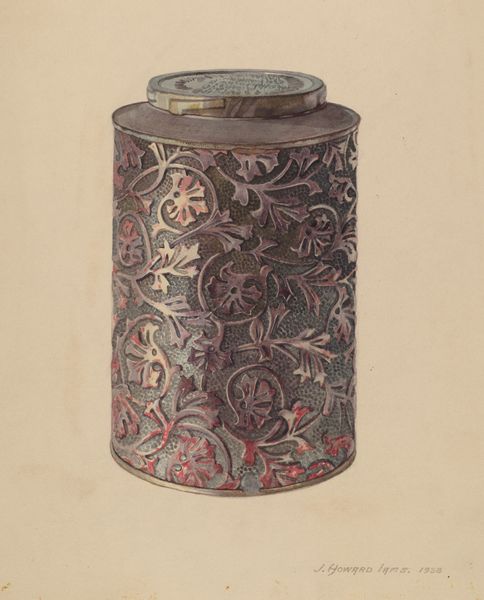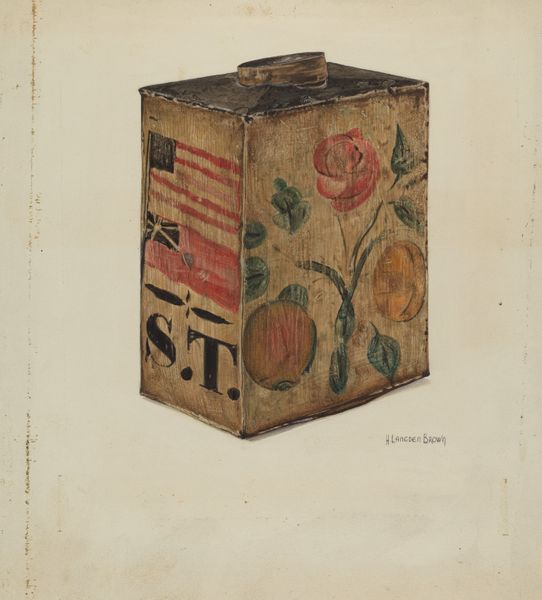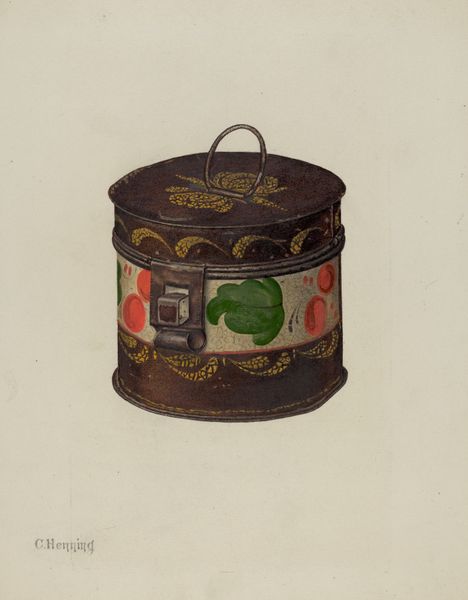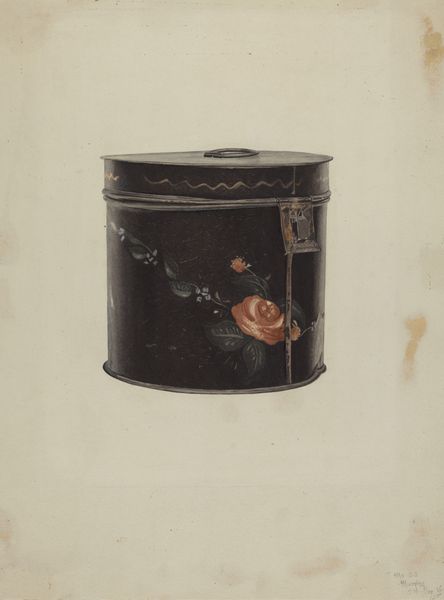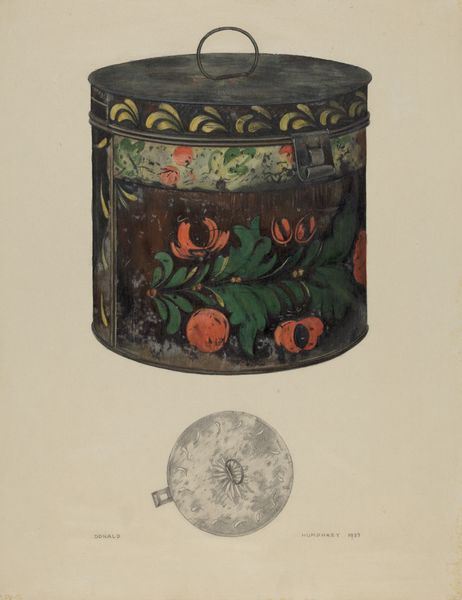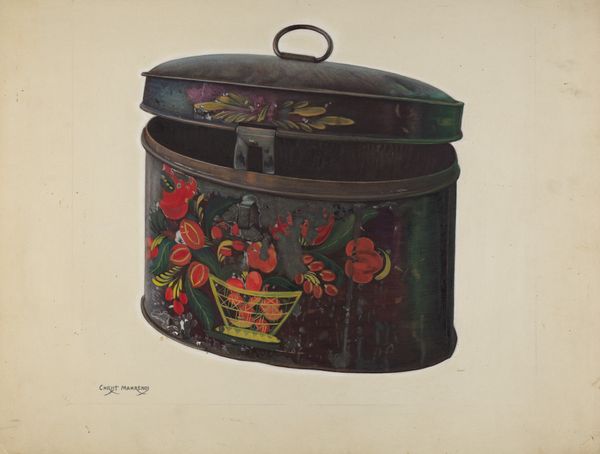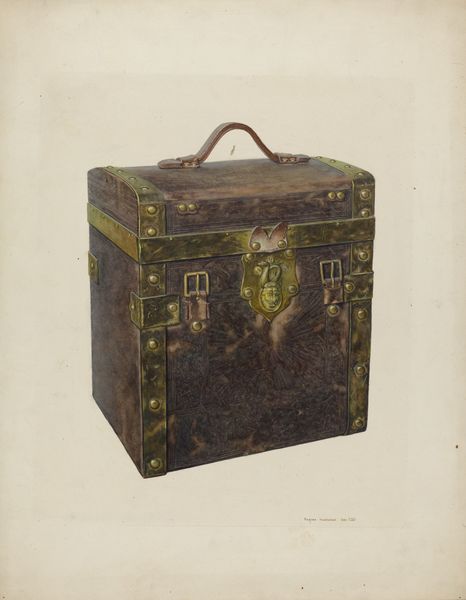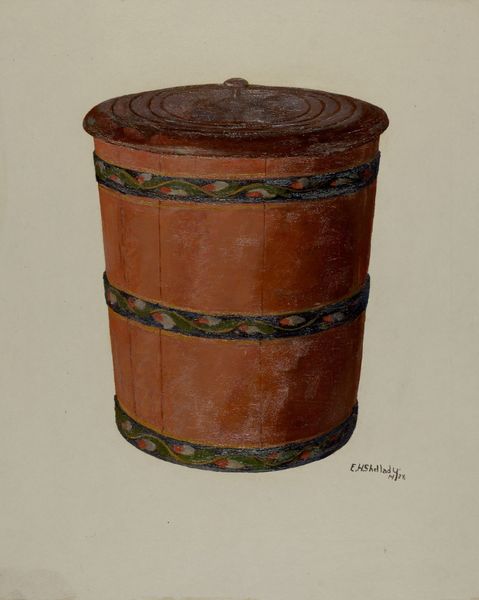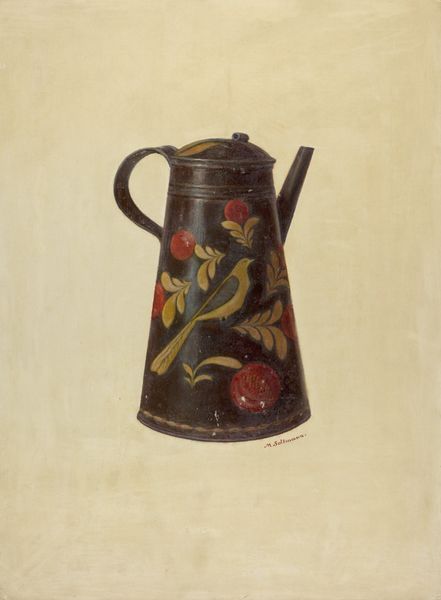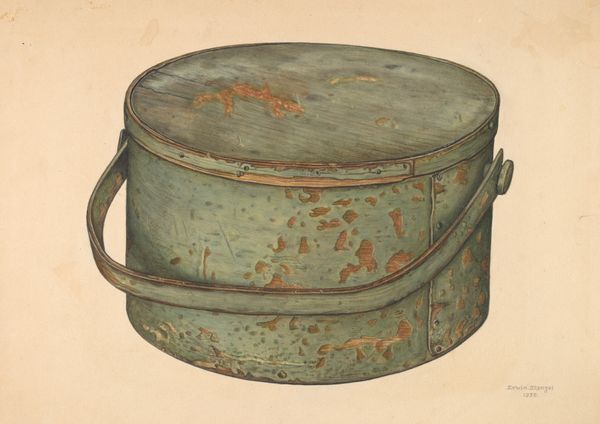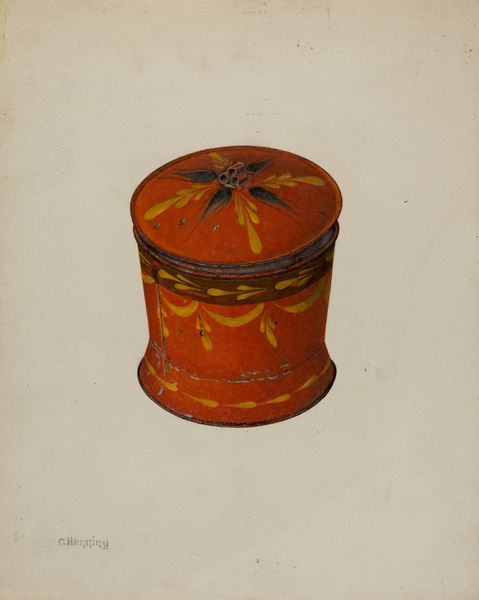
mixed-media, painting, oil-paint
#
mixed-media
#
painting
#
oil-paint
#
oil painting
#
folk-art
#
watercolour illustration
#
decorative-art
#
watercolor
Dimensions: overall: 35.5 x 27.9 cm (14 x 11 in.) Original IAD Object: 7" in diameter; 7 1/4" high
Copyright: National Gallery of Art: CC0 1.0
Editor: We're looking at William Frank's "Toleware Tin Cannister," dating to around 1937. It looks like it's made using a mixed-media approach. The muted colors and detailed floral design give it a charming, almost nostalgic feel. How do you interpret this work in terms of its composition and technique? Curator: Formally, I see a deliberate emphasis on the object's geometric structure juxtaposed with the organic floral motifs. The artist plays with surface texture, evident in the layered application of what appears to be oil paint. Consider the visual tension created by the contrast between the rigid lines of the cannister and the curvilinear forms of the painted flowers. Notice the bands of decoration—how do they segment the object? Editor: They seem to define separate spaces or registers, almost like chapters in a story. The top band with the swirling patterns feels different from the middle with the red berries. Does the way these different styles are layered have some significance? Curator: Precisely. This segmentation is crucial. Semiotically, we might consider each band a signifier. The top band's abstract swirls could represent a more conceptual realm, while the floral band below connects us to the natural world. Observe how Frank’s choice of a dark, almost somber palette interacts with the lively floral decorations. Editor: It's interesting how the dark colors almost swallow the floral designs, yet they still manage to stand out. The materiality itself, the very texture of the paint on tin, adds another layer of meaning. What do you make of that materiality? Curator: The choice of tin as a base is telling, given its association with everyday, utilitarian objects. By elevating this mundane material through artistic intervention, Frank subverts its original purpose. The oil paint further emphasizes the surface’s role as a canvas for expression. We're seeing a conversation between form and function here, wouldn’t you agree? Editor: I do. I see now how focusing on the visual structure of the work really unlocks different levels of meaning and helps to appreciate the artist's intent. Curator: Indeed. By analyzing the formal elements – line, color, texture, composition – we gain a deeper understanding of Frank's artistic strategy. It invites us to appreciate art beyond mere representation, towards a profound appreciation of aesthetic innovation.
Comments
No comments
Be the first to comment and join the conversation on the ultimate creative platform.
